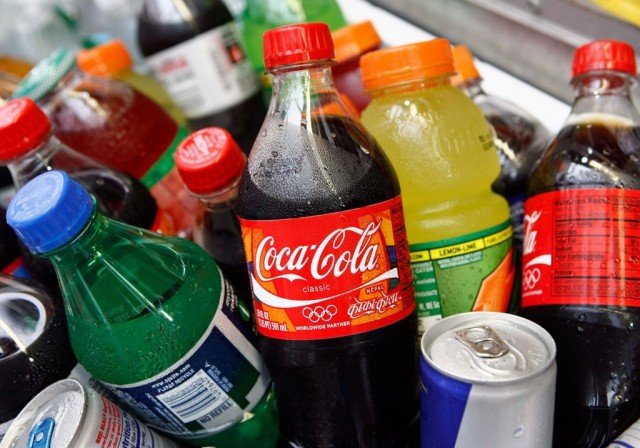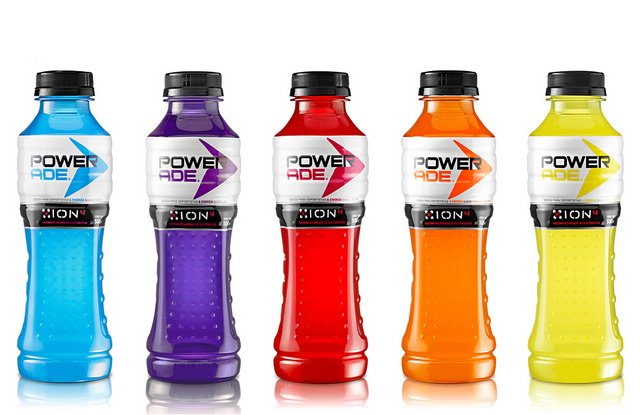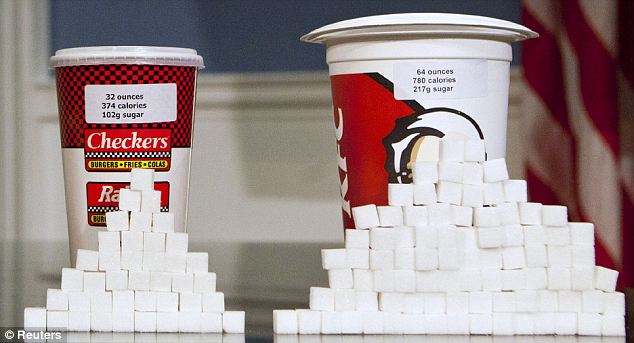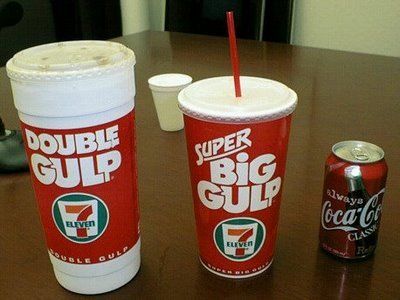Home Tags Posts tagged with "soft drinks"
soft drinks
A US research suggests that signs warning shoppers how much exercise they need to do to burn off calories in sugary drinks can encourage healthier choices.
A study of teenagers’ purchasing habits found they bought fewer sugary drinks and more water when the signs were up.
The most effective sign said it took five miles to walk off the 250 calories in a sugary drink.
Study leader Dr. Sara Bleich, associate professor at the Bloomberg School, John Hopkins University, said people do not understand calorie content on its own on a label.
“What our research found is that when you explain calories in an easily understandable way such as how many miles of walking is needed to burn them off, you can encourage behavior change.”
For six weeks, the brightly colored signs were displayed in corner shops in neighborhoods in Baltimore, in full view of young customers buying sugary drinks.
Four different signs were used in the shops. Two translated the calories in the drinks into the amount of exercise needed to burn off those calories.
One sign said it would take 50 minutes of running to work off the 250 calories – or 16 teaspoons of sugar – contained in a 590ml bottle of fizzy drink, sports drink or fruit juice.
The remaining signs listed the sugar content of the drink and the calories contained in the drink.

Signs warning shoppers how much exercise they need to do to burn off calories in sugary drinks can encourage healthier choices
To find out the impact of the signs, the researchers – writing in the American Journal of Public Health – interviewed children aged between 12 and 18 years old leaving the shop.
Out of the 35% of those interviewed who said they saw the signs, 59% said they believed the sign and 40% said their behavior had changed as a consequence.
Before the signs were put up, 98% of drinks bought in the shops were sugary ones. After six weeks, this was reduced to 89%.
During the time the signs were on view, sales of larger bottles of fizzy drinks went down from 54% to 37% of all purchases.
The percentage of teenagers who chose to buy no drink at all in the shops increased from 27% to 33%.
This change in behavior continued for several weeks after the “exercise” signs were taken down, the study adds.
In total, more than 3,000 drinks purchases were observed by the research team.
Dr. Sara Bleich said the findings could help in the fight against obesity: “This is a very low-cost way to get children old enough to make their own purchases to drink fewer sugar-sweetened beverages and they appear to be effective even after they are removed.
“Using these easy-to-understand and easy-to-install signs may help promote obesity-prevention or weight loss.”
Coca-Cola plans to remove controversial ingredient BVO from some of its drinks brands by the end of this year, following an online petition.
Brominated vegetable oil, or BVO, is found in Coca-Cola fruit and sports drinks such as Fanta and Powerade.
BVO will be replaced after concerns that an element of the additive is also found in flame retardants.
Rival Pepsi removed the chemical from its Gatorade sports drink last year.
A Pepsi spokesman said it also had wider plans to stop using BVO and had “been actively working to remove it from the rest of our product portfolio”.

BVO is found in Coca-Cola fruit and sports drinks such as Fanta and Powerade (photo Flickr)
Pepsi uses the ingredient in its Mountain Dew and Amp Energy drinks.
Coca-Cola spokesman Josh Gold stressed the move to remove BVO was not an issue of safety.
“All of our beverages, including those with BVO, are safe and always have been – and comply with all regulations in the countries where they are sold,” he said in a statement.
“The safety and quality of our products is our highest priority.”
BVO has been used as a stabilizer in fruit-flavored drinks as it helps to prevent ingredients from separating.
The health concerns stem from the fact BVO contains bromide, which is found in brominated flame retardants.
According to medical researchers at the Mayo Clinic, excessive consumption of soft drinks containing BVO has been linked to negative health effects, including reports of memory loss and skin and nerve problems.
BVO was dropped from the FDA’s “Generally Recognized as Safe” list of food ingredients in 1970.
However, drinks companies are allowed to use BVO at up to 15 parts per million (ppm).
In Japan and the EU, the use of BVO as a food additive is not allowed.
Coca-Cola said it would switch to using sucrose acetate isobutyrate or glycerol ester of rosin, which is commonly found in chewing gum.
The Atlanta-based company said two flavors of its Powerade sports drink – fruit punch and strawberry lemonade – have already replaced BVO with glycerol ester of rosin.
Coca-Cola’s decision to remove BVO from its drink reflects a growing move among companies to reconsider certain practices due to public pressure.
The campaign against the use of BVO was begun by Sarah Kavanagh, a teenager from Mississippi, who questioned why the ingredient was being used in drinks targeted at health-conscious athletes.
Thousands of people have since signed Sarah Kavanagh’s online petition on Change.org to have BVO removed from drinks.
Following Monday’s announcement by Coca-Cola and Pepsi, Sarah Kavanagh was quoted as saying: “It’s really good to know that companies, especially big companies, are listening to consumers.”
[youtube qAT1W5GLju0 650]
A scientific research published in France has revealed that Coca-Cola and Pepsi contain traces of alcohol.
The revelation will cause concern among those who chose the carbonated soft drink for religious, health or safety reasons.
According to tests carried out by the Paris-based National Institute of Consumption (INC) more than half of leading colas contain the traces of alcohol.
These include the brand leaders Coca-Cola and Pepsi Cola, while it is mainly only cheap supermarket versions of the drink which are alcohol-free.
French magazine 60 Million Consumers publishes the results of the tests in its latest issue.
They suggest that the alcohol levels are as low as 10 mg in every litre, and this works out at around 0.001% alcohol.
But the figures will still be enough to upset the thousands of Muslims who regularly drink Cola because their religion forbids them from drinking alcohol.

A scientific research published in France has revealed that Coca-Cola and Pepsi contain traces of alcohol
Those who are teetotal and drink Coke regularly will also be worried, as will those who choose it as an alternative to alcohol when they are driving.
Of 19 colas tested, the nine which did not contain alcohol were made by brands including Auchan, Cora, Casino, Leader Price and Man U-Cola.
Ten which had traces of alcohol in them included Coca-Cola, Pepsi Cola, Coca-Cola Classic Light and Coke Zero.
Michel Pepin, scientific director for Coca-Cola France, said: “It is possible that traces of alcohol come from the process of making Coca Cola according to its secret recipe.”
He insisted, however, that Coca-Cola drinks were provably “soft” and recognized as such “by the government authorities in which they are sold”.
Michel Pepin added: “Furthermore, the Paris Mosque has provided us with a certificate stating that our products can be consumed by the Muslim community in line with the religious opinions of the Committee of the Mosque of Paris.”
A spokesman for Pepsi acknowledged that “some soft drinks can contain minute traces of alcohol because of the ingredients used”, although “the Pepsi Cola recipe does not contain alcohol”.
Both companies suggested that natural fruit can ferment and produce minute traces of alcohol.
Coca-Cola was invented in 1886 by the American John Pemberton and was originally patented as a medicine which could cure everything from headache to impotence.
It went on to dominate the international soft drinks market and is now a US icon sold in more than 200 countries.
However, caffeine is widely considered to be the main stimulant contained in the drink, along with vast amounts of sugar which have come to associate it with a range of health problems including obesity.
Every can of Coke contains approximately 10 teaspoons of sugar.
Taking a cue from New York City’s proposed ban on sugary drinks, Cambridge, Massachusetts, is looking to pass a similar crackdown to combat obesity and diabetes.
Residents of Cambridge may have to sacrifice larger portions of soft drinks in its battle of the bulge, nearly a month after New York City Mayor Michael Bloomberg made national headlines with his own proposal.
Cambridge Mayor Henrietta Davis submitted the proposal at a city council meeting on Monday night.
The size limit on the drinks was not mentioned in her resolution, but it’s expected to follow Bloomberg’s limit of 16 ounces.
Cambridge Mayor Henrietta Davis told WHDH: “When people are served these gigantic portions of soda in bottomless cups, sometimes it’s just more than people are able to resist.”

Taking a cue from New York City's proposed ban on sugary drinks, Cambridge, Massachusetts, is looking to pass a similar crackdown to combat obesity and diabetes
Also like Michael Bloomberg’s resolution, the Davis’ measure has ignited a heated discussion.
Axis Sivitz, 25, of Cambridge, told The Boston Globe that he supports the ban, saying: “When faced with a health crisis, you have to do something about it.”
Sophia Talamasm, 29, told the paper she is against Henrietta Davis’ proposal.
She said: “Sometimes you need a soda.”
Cambridge is home to Harvard University, where Michael Bloomberg got his MBA degree.
New York City opened the issue for public debate after Michael Bloomberg pitched the crackdown to the city council late last month.
While Michael Bloomberg has faced uproar in New York over the ban, polls show that New Yorkers are mostly split on the issue.
The city Board of Health, which is appointed by the mayor, is expected to approve the measure after a three-month comment period.
It could take effect as early as March, unless the critics who accuse Michael Bloomberg of instituting a “nanny state” can get the courts or state lawmakers to intervene.
Last week, the legality of such a crackdown was called into question.
It’s not just businesses and industry groups that could sue. In theory, any individual affected by the ban could bring a legal challenge.
But it wouldn’t be enough to simply claim that the ban infringes on personal freedom, said Rick Hills, a New York University law professor specializing in local government law and New York City.
And Rick Hills said that opponents would have to do more than argue that the law affects one source of sugar more than others.
Courts, he said, have repeatedly ruled that the government can try to eradicate societal ills one step at a time.
New York City Mayor Michael Bloomberg plans to ban any soft drink over 16 ounces across the city by March 2013.
Michael Bloomberg believes that banning the bubbles will combat obesity, diabetes, and other health problems plaguing the people of NYC.
“Obesity is a nationwide problem, and all over the United States, public health officials are wringing their hands saying, <<Oh, this is terrible>>,” Mayor Michael Bloomberg said to the New York Times.
“New York City is not about wringing your hands; it’s about doing something.”
According to the New York City Health Department, more than half of adult New Yorkers are overweight (34%) or obese (22%).

New York City Mayor Michael Bloomberg plans to ban any soft drink over 16 ounces across the city by March 2013
Michael Bloomberg, who was the driving force behind the city’s calorie counting and anti-smoking campaigns, hopes to implement the ban soon.
His close attention to health issues has earned him the nickname “Nanny Bloomberg”.
The decision will affect everything from 7-Eleven Big Gulps to Starbucks Ventis, leaving a bad taste in some resident’s mouths.
“If people want to drink 24 ounces, it’s their decision,” said Zara Atal, 20, a college student from the Upper East Side to the New York Times.
The ban would not apply to diet sodas, fruit juices, dairy-based drinks or alcoholic beverages.
It also would not affect beverages sold in grocery or convenience stores.
Still, the NYC Beverage Association balked at Mayor Michael Bloomberg’s idea.
“The city is not going to address the obesity issue by attacking soda, because soda is not driving the obesity rates. The overall American diet is,” they said in a statement to CBS.
Michael Bloomberg admitted he occasionally sips a diet soda on a hot day, but argues that there won’t be any laws restricting the amount of small sodas one can purchase.
“Your argument, I guess, could be that it’s a little less convenient to have to carry two 16-ounce drinks to your seat in the movie theater rather than one 32 ounce,” he said.
“I don’t think you can make the case that we’re taking things away.”
Before the proposal can curb New Yorkers’ thirst, the Board of Health must approve it. Experts believe approval is all but confirmed, considering that all the members were appointed by Mayor Michael Bloomberg.





